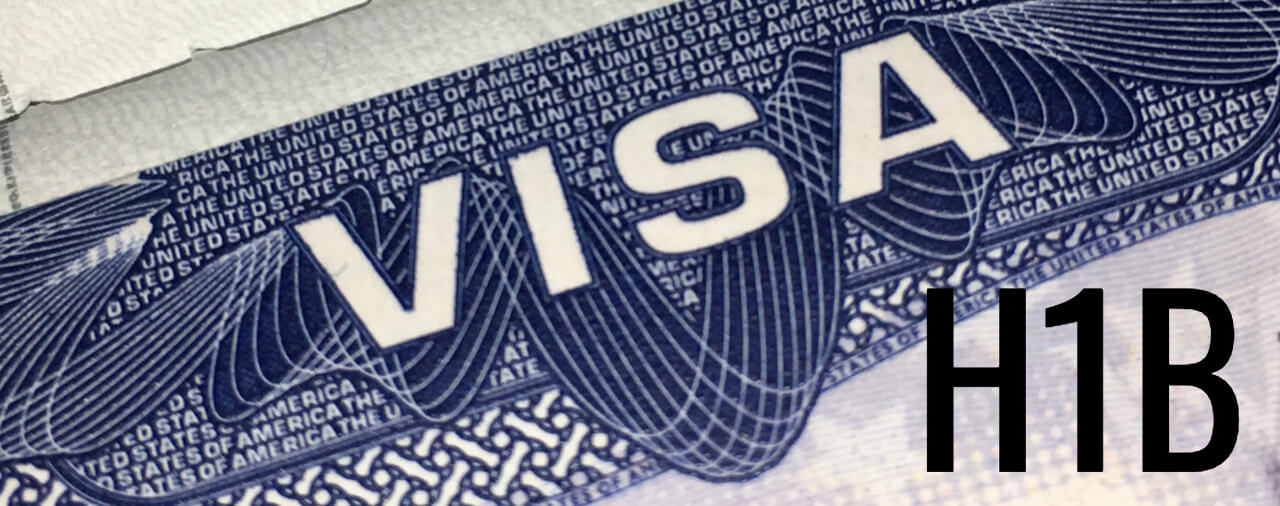- Introduction to H1B Visas
- Requirements for Qualifying for H1B Status
- Rules for Annual Caps on H1B Visas
- Rules for Labor Condition Applications and Complaint Procedures
- Increased Scrutiny for H1B Dependent Employers
- Rules for Portability of H1B Status
- Rules for Extending H1B Status
- Rules for Adjustment from H1B Status
Introduction to H1B Visas
The H1B visa is a type of nonimmigrant visa that allows the visa holder to work in a statutorily defined “specialty occupation” in the United States for three years, with extensions possible in most cases [see article].1 In order to apply, the nonimmigrant applicant’s employer must submit an H1B petition to the United States Citizenship and Immigration Services (USCIS).
Requirements for Qualifying for H1B Status
Since 1990, H1B visas are issued only for employment in a “specialty occupation” that requires theoretical and practical application of a specialized body of knowledge.2 H1B applicants must meet the following criteria to be eligible for an H1B visa:
Must obtain a state license to practice the job being applied for, if applicable
Must have either a bachelor’s or higher degree in the specialty being applied for or have experience in the specialty that is deemed equivalent to a bachelor’s degree or higher3
Rules for Annual Caps on H1B Visas4
Meeting the criteria for eligibility for an H1B visa does not guarantee that the applicant will obtain one. Since 2004, the United States has capped the number of H1B visas it grants at 65,000 per year, and each year the demand for H1B visas has far outstripped the supply.
Of the 65,000 available H1B visas, 6,800 are set aside for a special admission labeled H-1B1. 5,400 H-1B1 visas are set aside for nationals of Singapore and 1,400 for nationals of Chile. If any of the 6,800 H-1B1 visas are not allocated in a given year, the extra H-1B1 visas are returned to the main H1B visa pool for general applicants.
Since 2004, there has been a separate pool of 20,000 H1B visas under the H1B Advanced Degree Exemption.5 6 If an employer is seeking an H1B visa for a foreign worker with a master’s degree or higher, the employer may first apply for one of the 20,000 H1B visas created by the H1B Master’s Degree Exemption. While employers may not seek both a regular H1B visa and an H1B Master’s Degree Exemption simultaneously visa7, unsuccessful applicants for the H1B Master’s Degree Exemption visa are subsequently placed in the pool of applicants for normal H1B visas.8 Applicants with master’s degrees or higher should always first apply for the H1B Master’s Degree Exemption in order to have the best chance to obtain an available H1B visa.
Rules for Labor Condition Applications and Complaint Procedures
Employers petitioning for H1B workers are required to file a Labor Condition Application with the Secretary of Labor.9 10 The application requires the employer to certify that:
He or she will pay an H1B worker equal to or above the average of wages for the occupation (whichever is highest)
The H1B worker’s condition will not have an adverse effect on similarly situated U.S. workers
There is no ongoing labor dispute or lockout at the place of employment11
The Labor Condition Application must be posted at the principle place of work for ten business days.12 There is a complaint procedure for adversely affected parties who feel that the employer has violated any of his or her assertions on the Labor Condition Application.13 H-1B workers also may use the complaint procedure to seek remedy if their employer is paying less than what he or she asserted on the Labor Condition Application.
Increased Scrutiny for H1B Dependent Employers
Since 199814, employers who have workforces where at least 15% of their employees are H1B workers are categorized as H1B dependent and are subject to increased scrutiny. Those employers must attest in their Labor Condition Applications that their H1B workers are not displacing any U.S. workers within their business.15 H1B applicants for employment with H1B dependent employers should be aware that applications will be subject to more scrutiny than H1B applicants for employers who are not H1B dependent.
Rules for Portability of H1B Status16
In order for an H1B employee to change jobs, he or she must have their prospective new prospective employer file an H1B visa transfer petition while he or she is still in H1B status.17 Furthermore, the H1B employee must not have engaged in any unauthorized work.18 The employee may begin work with the new employer upon the employer filing the H1B visa transfer petition.19 20 H1B visa transfer petitions are not subject to annual H1B visa caps.21
Rules for Extending H1B Status
H1B status is granted for three years and may be extended for up to three additional years.22 After six years on H1B status, H1B workers must spend at least one year outside of the country before they can be readmitted under the same status.23 24 The H1B visa status of an employee may be extended in 1-year increments iIf the H1B worker has a request for labor certification or application for employment-based immigration that has been pending for more than 365 days.25 If the employment-based petition is approved, he or she may be eligible for a three-year extension if the adjustment of status is still pending.26
H1B workers engaged in research work for the Department of Defense may receive a five year extension so long as they do not spend more than ten total years in the United States.27
The following H1B workers are not subject to the 6-year limitation on admission rules:
Workers who engage in seasonal work
Workers who engage in intermittent work of less than six months per year
Workers who do not reside in the United States for more than six months annually
Workers who reside abroad and commute to the United States for part-time employment 28 29
Rules for Adjustment from H1B Status30
Most nonimmigrant visa applications require the applicant to demonstrate that he or she intends to return to their country of nationality once their nonimmigrant visa expires.31 However, H1B applicants are not required to maintain a foreign residence they do not intend to abandon their applications are not assessed under the presumption that they intend to return to their country of nationality at the expiration of their H1B visa.32 33 Furthermore, H1B visa holders are explicitly permitted to seek permanent resident status while on H1B status.34 35
- D. Weissbrodt and L. Danielson, Immigration Law and Procedure in a Nutshell (West 6th Ed. 2011) 204
- Weissbrodt and Danielson 200
- Weissbrodt and Danielson 201
- But see our article on H1B cap-exempt institutions for an exception to this rule [see article]
- Weissbrodt and Danielson 202
- 118 Stat. 2809.
- 73 Fed.Re. 15389-01
- Weissbrodt and Danielson 202
- Weissbrodt and Danielson 203
- INA §212(n)
- Weissbrodt and Danielson 203
- Id.
- Id.
- American Competitiveness and Workplace Improvement Act
- INA § 212(n)
- 204
- Id.
- Id.
- INA § 214(n)
- 204
- Id.
- Id.
- 8 C.F.R. § 214.2(h)(13)
- 114 Stat. 1251
- Weissbrodt and Danielson 204
- Id.
- Id.
- 8 C.F.R. § 214.2(h)(13)(v)
- Follow this link for our overview of adjustment of status.
- Weissbrodt and Danielson 205
- Id.
- 1990 Act §§ 205(b), (e); 1990 Act § (205)€; INA § 101(a)(15)(H)(i); 1990 Act § 205(b)1); INA § 214(b)
- Weissbrodt and Danielson 205
- 1990 Act § 205(b)(2); INA § 214(h)
Resources and materials:
Weissbrodt, David. Danielson, Laura. Immigration Law and Procedure in a Nutshell. 6th ed. U.S. West Publishing, 2011. 200-205, Print. West Nutshell Series.





